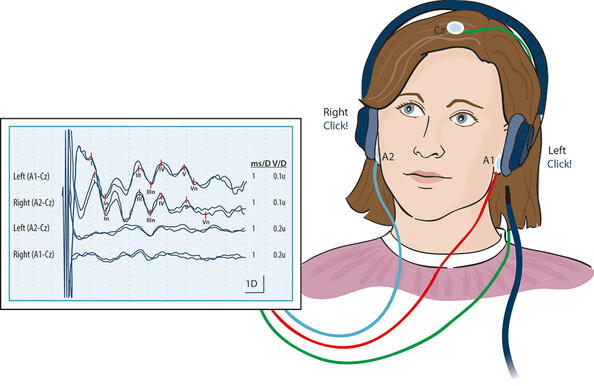Somatosensory evoked potential study
What is a Somatosensory Evoked Potential (SSEP)?
A somatosensory evoked potential (SSEP) is an evoked potential caused by a physical stimulus. Electrodes placed over certain parts of the body capture SSEP responses, which are subsequently shown as a reading on an electroencephalogram (EEG). The median nerve at the wrist or the posterior tibial nerve at the ankle is the most typically stimulated nerves during an SSEP. Despite the fact that the stimuli are non-physiological, this inquiry evaluates the passage of the sensory nerves to the sensory centres of the brain.
When is the Somatosensory evoked potential study used?
A doctor may advise you to undergo an SSEP test if you have been experiencing numbness or weakness in your arms or legs, which might be caused by abnormalities with the somatosensory nervous system. These emotions are frequently subtle and difficult to identify during a standard clinical examination.
What does the Somatosensory evoked potential study detect?
A neurologist may use the SSEP to estimate the time it takes nerve fibers to transfer a stimulus from the point of stimulation (wrist or ankle) to a detection site on the skull, neck, or back. The SSEP pattern allows the neurologist to determine how effectively these sensory nerves are functioning. Multiple sclerosis (MS), for example, may cause demyelination, or damage to the myelin sheath protecting nerve fibers in the brain and spinal cord. Because of the damage, signals take longer to transfer through neural pathways or are inhibited, resulting in alterations in the SSEP.
What happens during Somatosensory evoked potential study examination?
The SSEP process itself is non-invasive and safe. You may be required to remove your shoes and outer top clothes in order for electrodes to be placed. Detection electrodes will be placed to certain areas of your skull, neck, and back. A small generator is used to generate tiny electrical impulses that activate nerves in the wrist or ankle. The impulses are normally not unpleasant, but they may cause your thumb or toe to twitch slightly, which is normal. Special equipment is used to record responses to electrical stimulation via the electrodes. The electrodes will be removed after the treatment. After the test findings have been analyzed, your doctor may discuss with you the treatment procedure.
Benefits of Somatosensory evoked potential study
- SSEP analysis may be a reliable tool for determining sensory conduction.
- An SSEP test may detect the existence and severity of a specific illness or damage affecting the somatosensory nerve system.
It may be used to detect illness development by monitoring someone’s neurological status. - SSEP analysis is also used to monitor a patient’s condition during spinal cord surgery or in the intensive care unit (ICU) for brain injury.
- It is often less expensive than other procedures such as an MRI.
For more information & consultation on EEG Test, Call our expert Dr. Amit Shah – Consultant Neurologist in Mumbai on 98195 61456 or Book an Appointment

